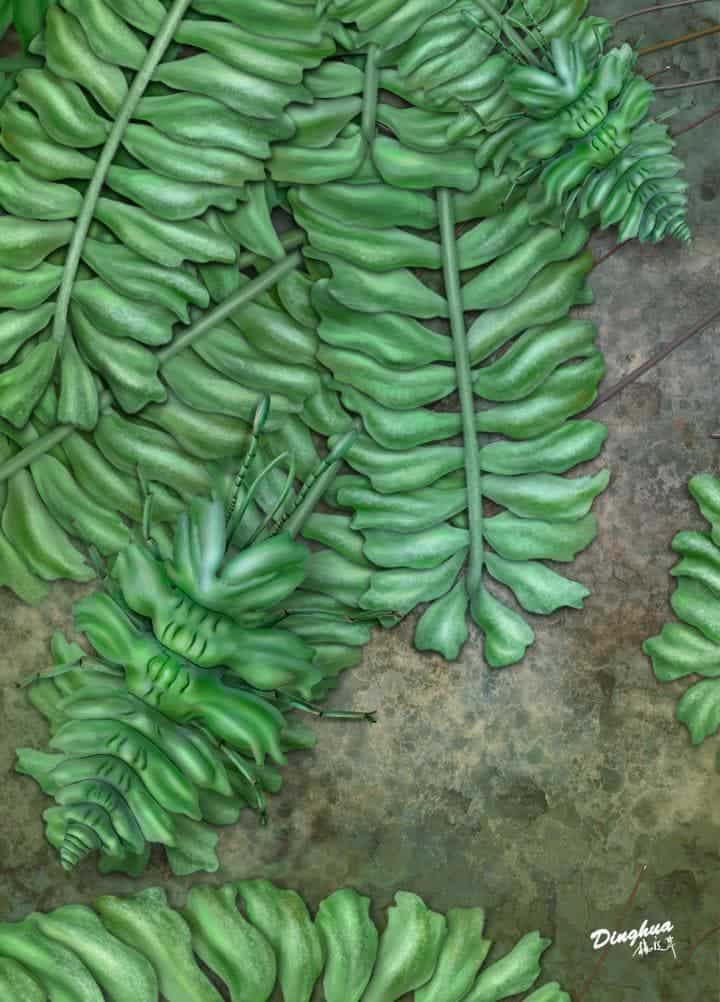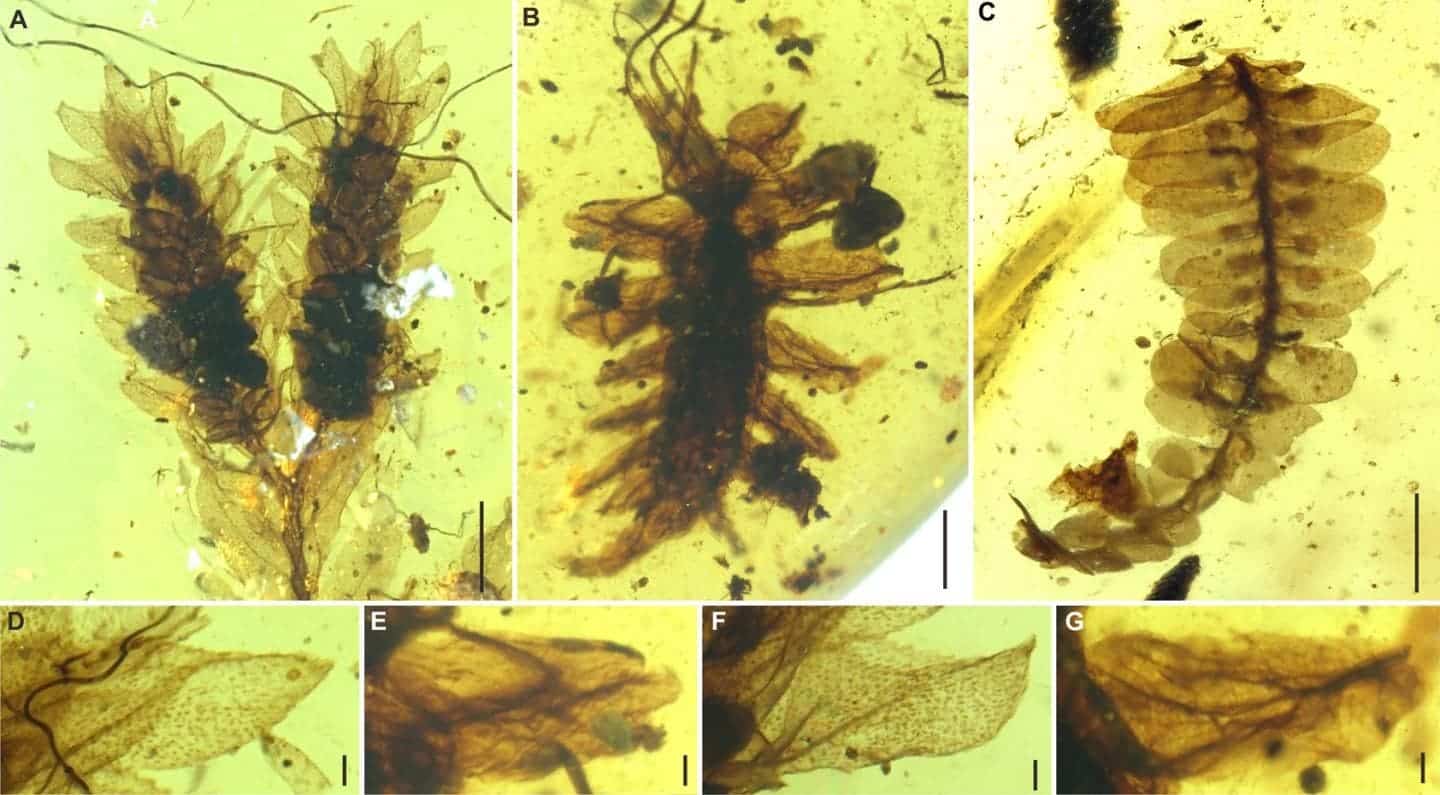It is a dog eat dog world — sometimes the only way to survive is to hide. Camouflage is an approach not only employed by the military, but also by many animals, including leopards and stick insects. A 100-million-year-old fossil has been found that brings a new mimic to light. A new lacewing species imitates a liverwort which, although it is a common plant, is rarely mimicked.
Liverworts are a diverse group of plants that were among the earliest to evolve. Hence, they are relatively primitive and need to live in moist environments. They were extremely common in the Paleozoic period and exist to this day. There are currently about 9,000 species of liverworts and they tend to grow on trees and other plant surfaces. Strangely, there are very few insects that mimic liverworts, among both living animals and fossils. It could simply be that no one has noticed them before.

An illustration of what the lacewing larvae could have looked like among liverworts. Image credits: YANG Dinghua.
Attentive researchers from China Agricultural University, the Nanjing Institute of Geology and Palaeontology (NIGP) of the Chinese Academy of Sciences, and their colleagues found two larvae of a new species of lacewing in Cretaceous Burmese amber. This discovery is the first case of fossilized insects that mimic liverworts. It is also the first time that lacewing larvae have been seen imitating something else. The research was published in Current Biology.
The larva has broadly foliate lateral plates on its thorax and abdomen making this the only lacewing species with this feature. It makes them look like liverwort leaves that match some coeval liverworts.

B, E, G are the fossilized larvae, the others are liverworts. Image credits: Nanjing Institute of Geology and Palaeontology.
The larvae probably fed upon small arthropods, such as coccoids, psyllids, thrips, or barklice, according to Dr. Bo Wang from Nanjing Institute of Geology and Palaeontology. Therefore, these larvae were not camouflaging themselves to avoid being eaten, but rather to appear unsuspecting so that they could get their prey.
“Green lacewing larvae have several different camouflage mechanisms. Some extant and extinct ones have long dorsal setae to carry some camouflaging materials. But our new fossils are different from them in lacking the setae. Some green lacewing larvae carry their own prey on the back to provide physical and/or chemical camouflage. This is an extreme adaptation that functions as a “wolf-in-sheep’s-clothing” strategy,” said Dr. Wang to ZME Science.
By imitating a liverwort and living among them, the larvae could potentially be overlooked and get an easy meal.
Journal reference: Wang et al. 2018. Current Biology.









